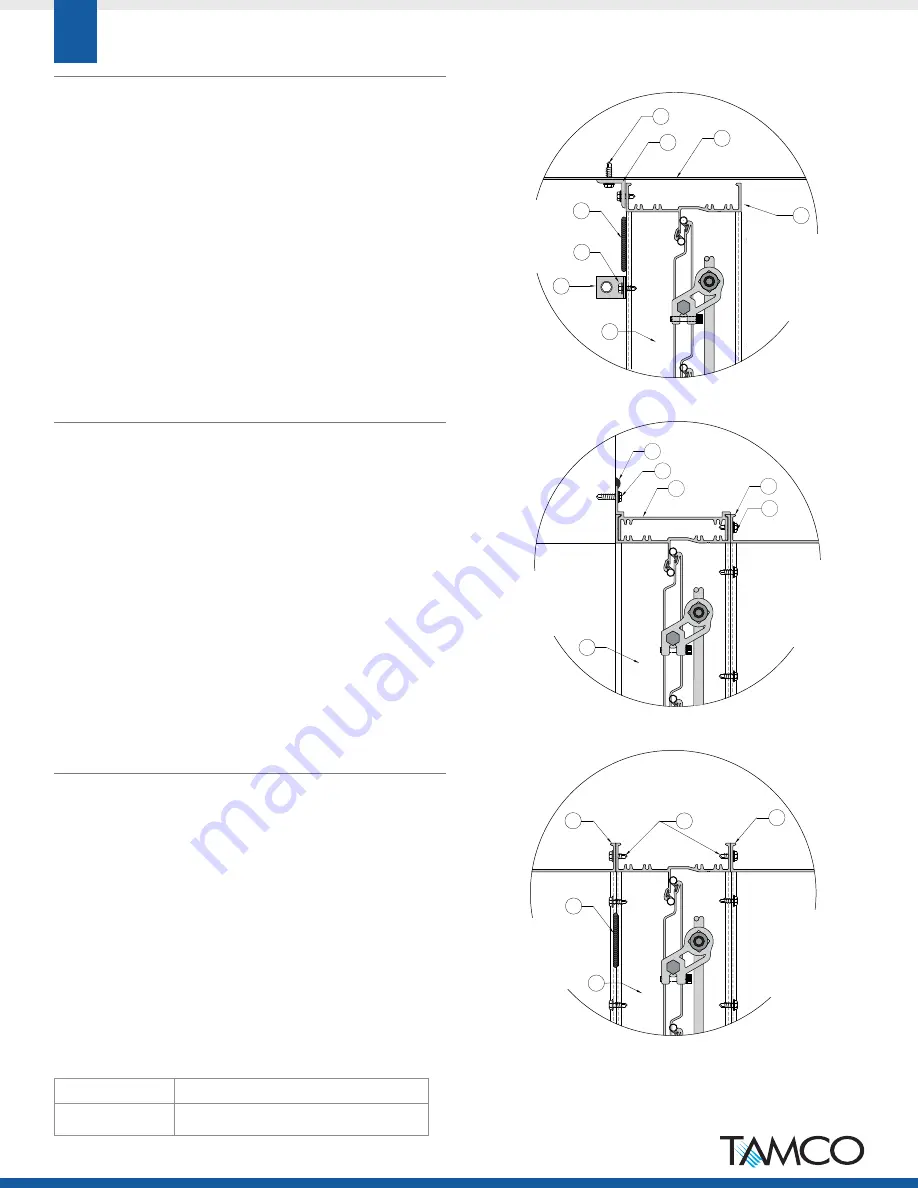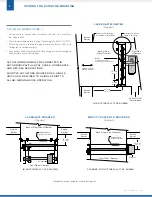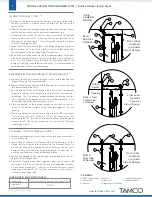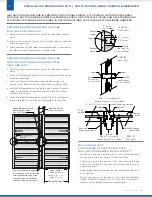
www.tamcodampers.com
© T.A. Morrison & Co. Inc., 2017
2
6
4
6
1
Back or
Rear Side
of Damper
Front, Label,
Jackshaft,
or Actuator
Side of Damper
2
1
4
3
3
4
3
5
Back or
Rear Side
of Damper
Front, Label,
Jackshaft,
or Actuator
Side of Damper
Front, Label,
Jackshaft,
or Actuator
Side of Damper
Back or Rear
or Wall Side
of Damper
2
7
6
4
1
Opening
8
Smoke
Barrier
INSTALLATION PROCEDURES FOR |
Smoke Damper Install Types
3
*LEGEND:
1. TAMCO Smoke Damper 4. Fastener
7. Extended flange frame
2. Silicone caulk
5. Sleeve /duct
8. Substrate fastener
3. Clip angle
6. Flanged to Duct connection
*SEE
LEGEND
BELOW
²APPROVED SILICONE CAULK:
Dow Corning:
RTV Silicone Silastic 732, Xiameter 732, Xiameter SLT 5100
Momentive
Performance Materials:
RTV 108
a. Measure and if necessary, adjust the duct or opening to ensure that it
is true and square.
b. Run a bead of silicone caulk² around the inside perimeter of the
flange, where it comes into contact with the damper frame, to
prevent leakage at the connection point between the duct and
damper frame. This step may be performed now or after step "d",
once the smoke damper has been fastened in place.
c. Position the Flanged to Duct mount type smoke damper, so that it is
adjacent to the flanged duct.
d. Secure the flanged connections together using, as a minimum; #8
sms screws,
3
/
16
”
(4.8 mm)
rivets, #12 bolts/nuts, flange mount system,
or tack welds, placed at 12”
(305 mm)
oc intervals. Fasteners should
begin at no more than 6”
(152 mm)
from the corners. A minimum of 1
fastener is required per side.
a. Dampers should be ordered from the factory with extended rear
flanges if they are to be wall mounted.
b. Measure both the wall opening and the damper ID, to ensure that the
two dimensions are identical.
c. Run a bead of silicone caulk² around the perimeter of the damper
flange face, where it will come into contact with the substrate upon
installation. This is to prevent leakage between the damper and the
wall. Caulking may be applied at this step, or following step "e", once
the smoke damper has been fastened in place.
d. Place the damper in the desired location on the wall, so that the
inside of the damper's frame aligns with the edges of the wall
opening.
e. Secure the damper to the wall using, as a minimum; #8 sms screws,
3
/
16
”
(4.8 mm)
rivets, #12 bolts/nuts, ¼"
(6.4 mm)
Tapcons, or tack
welds, placed at 12”
(305 mm)
oc intervals. Fasteners should begin at
no more than 6”
(152 mm)
from the corners. A minimum of 1 fastener
is required per side.
a. Determine the location where the damper is to be installed inside
the duct or sleeve. This location must be within 24"
(609 mm)
of the
smoke barrier.
b. Slide the damper into pre-determined sleeve or duct location. Ensure
that the damper, sleeve, and/or duct are all square and true.
c. Situate the clips around the back or rear perimeter of the damper
frame, at a maximum of 12”
(305 mm)
on center (oc) intervals and so
they begin at no more than 6”
(152 mm)
from the corners. A minimum
of 1 clip is required per side.
d. Fasten clips to the duct first and then to the damper using, as a minimum;
#8 sms screws,
3
/
16
”
(4.8 mm)
rivets, #12 bolts/nuts, or tack welds. Clips
are not required on the front (label) side of the damper.
e. Run a bead of silicone caulk² around the inside perimeter of the back
side of the damper, where it comes into contact with the sleeve or
duct. It is not necessary to caulk around the front (label) side of the
damper. If caulking is applied after installation, it is recommended to
caulk around all clips to minimize leakage.
IN DUCT INSTALL TYPE
&
EXTENDED REAR FLANGE INSTALL TYPE (WALL MOUNT)
&
FLANGED TO DUCT INSTALL TYPE
&







